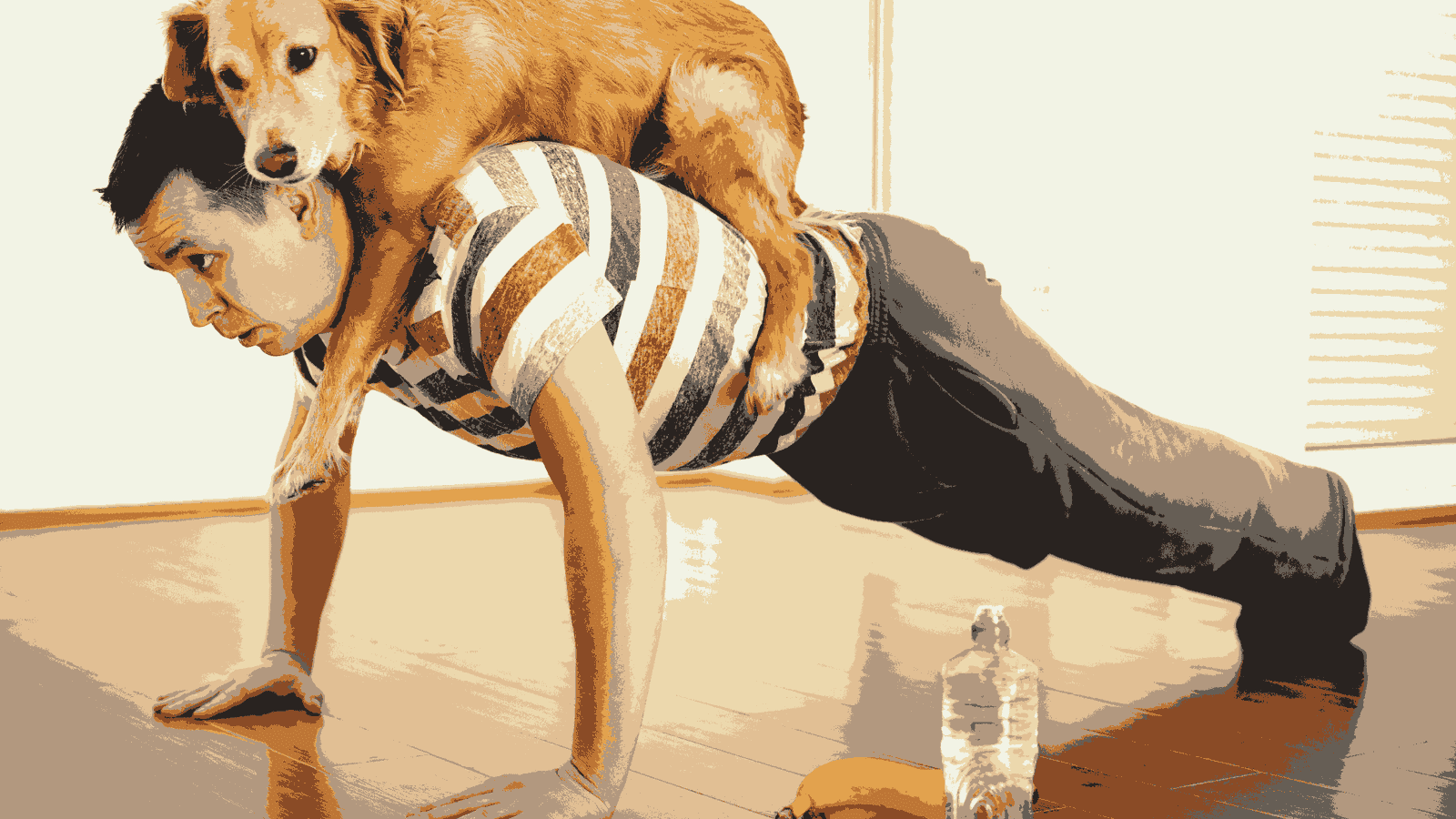A Guide On How To Make Exercise A habit that sticks (17 Tips)

“If you don’t make time for exercise, you’ll probably have to make time for illness.”
-Robin Sharma
To be sure, wishing to make exercise a habit and really succeeding at doing so are two wholly different things. Modifying old habits is a strenuous process.
The transition to a new way of life is challenging. This is especially true when internalized beliefs about one’s own beauty and value are involved.
Did something wrong or lost faith in yourself? From this, you can gain insight. Feeling under the weather or bored? Healing and development are possible. Try to find encouragement in the process of developing a fitness program. Learn more about how to include fitness into your daily routine to improve your health.
How To Make Exercise A Habit Tips
Now, let’s look at some easy strategies to get inspired to work out and develop a habit of regular physical activity.
One should begin on a small scale.
Experts recommend beginning with short but consistent strength exercises for those of us who haven’t done much strength training before or for whom it has been some time. Mary Winfrey-Kovell, a lecturer in exercise science at Ball State University, recommends beginning with more modest objectives ( “Set some small goals for yourself,”). There should be some action rather than none.
In what ways are we talking about tiny? Exercise scientists recommend investing 20 minutes twice weekly to strength training, or maybe 10 to 15 minutes three times a week, depending on one’s schedule, needs, and desires.
Supporting this is a new study published in the British Journal of Sports Medicine that indicated even moderate strength training (30-60 minutes per week) can reduce the risk of death, cardiovascular disease, and cancer by 10%-20%. (It’s important to point out that the benefits slowed down after two hours per week and reached a plateau after an hour.)
Put the basics in place first.
In spite of what you may have heard from fitness commercials, you don’t need a ton of expensive equipment to get in shape. Anne Brady, a kinesiology professor at the University of North Carolina at Greensboro, has said, “Strength training does not have to imply barbells and really big weights and tons of equipment.”
Push-ups, planks, and sit-to-stands (also known as chair rises) are examples of body-weight exercises that, when performed correctly and consistently, can yield impressive results, she said. As your strength and expertise increase, you can gradually include equipment.
Accept your status as a newbie.
Starting a strength-training routine for the first time might be intimidating, especially if you do it in front of other, more seasoned gym-goers or in a public setting.
Casey Johnston, author of the popular lifting newsletter “She’s a Beast” and the book “Liftoff: Couch to Barbell,” has observed that many of us “hold ourselves to a standard that we need to seem like we already know what we’re doing.” “Don’t worry if you mess up. Questions are encouraged.
If you want to avoid injuries and develop a sustainable habit, the best thing you can do is educate yourself on the perfect form and the safest exercises for your body.
If you have the financial means to do so, engaging a qualified personal trainer for a few sessions (either online or in person) to devise a training program and assist you through the exercises is highly recommended. And if you work out at a facility with staff, don’t be shy about asking for help.
One benefit of making a clean slate? At first, you’ll see a tremendous increase in your strength. Ms. Johnston speculated that most individuals would be “surprised” to learn how rapidly they could become significantly stronger than they already are. In her opinion, “you truly will feel the difference in functionality in your body” after only a few sessions.
Get it out of the way early.
Experts recommend getting in your strength training first thing in the morning if you’re like me and regularly intend to do so at night but discover that by 5 o’clock or later, you feel too tired to motivate yourself to get off the couch and get to work.
The more willpower we use up during the day, the less we have for bedtime activities, and so goes the theory. “
According to Elizabeth Hathaway, a professor of exercise psychology and health behavior change at the University of Tennessee at Chattanooga, “if you’ve sprinkled out self-control for various things, and your plan was to work out in the evening,” it’s not surprising if you give in to a desire to veg out in front of your phone or TV instead of breaking a sweat. ( Source)
The constraint is a finite resource that must be carefully managed.
Measuring, not weighing
When it comes to motivation, the scale can be the worst consideration. Despite your best efforts, your weight simply remains the same. You can be gaining muscle while losing fat, which could be a contributing factor. Another explanation is that significant weight loss just takes time and dietary changes.
So stop checking the scale every day and start taking measures instead.
Long before the scale changes, the tape measure will indicate a change. Take a measurement of your upper arms, waist, upper thighs, chest, and calves. Make sure you measure consistently at the same location. Watch the progress as you add those dimensions to your wall chart.
Try what psychologists call “bundling temptation.”
Are you in need of a little additional encouragement? Temptation bundling is a behavioral economics hack proposed by Kelly Strohacker, a professor of exercise physiology at the University of Tennessee-Knoxville who studies the modification of health-related behavior.
The idea is that if we “bundle” an activity we find difficult with something we enjoy and look forward to, we are more likely to complete the latter. This could be a beloved podcast or TV show, a captivating audiobook, or a fun playlist.
Dr. Strohacker advised putting the two together to assist overcome the “I don’t really want to do it, but I know I should” feeling. The trick is to just allow yourself to enjoy that pleasure while you are actually working out.
You can dress whatever you like
If getting dressed in “workout clothing” is something that prevents you from lifting weights, then you shouldn’t.
Wear whatever makes you feel most at ease, Dr. Brady advised. The ability to freely move through all of one’s possible ranges of motion is crucial. Even if you feel more comfortable exercising in your jammies, you may benefit from wearing “breathable” fabrics that allow excess heat to escape.
Apply some mindfulness techniques.
As you get your heart rate up and burn some calories, try not to zone out or become distracted.
Not only will you improve your physical condition more quickly, but you’ll also be able to interrupt the flow of worries or negative thoughts running through your head, easing stress and anxiety, simply by paying attention to how your body feels as you exercise, from the rhythm of your breathing to the way your feet strike the ground to the muscles flexing as you move.
As an added benefit, this type of exercise can help your nervous system “unstick,” or start to move out of the paralyzing stress response that often accompanies post-traumatic stress disorder and other forms of trauma.
You must always keep in mind that moving forward is the ultimate objective.
Without continual growth and progress, such words as improvement, achievement, and success have no meaning. Benjamin Franklin
Dr. Strohacker advises practicing self-compassion if missed sessions are necessary. The ultimate goal of strength training, like that of any exercise, is simply to stick at it throughout our lives, despite inevitable failures.
She explained that the idea that “you can achieve it if you truly want to” is widely disseminated in contemporary society. As the saying goes, “That’s simplifying things a lot.” The truth is, life is unpredictable.
She also noted that studies show that “enjoying it and feeling accomplished” is the genuine key to longevity and consistency in any activity. When we recognize and appreciate even small victories and recover quickly from setbacks, we are better able to achieve our goals.
Get in Shape With Your Pals
One more thing: why not include your pals? Working out with a friend is not only more enjoyable but also a fantastic opportunity to encourage your pal to adopt some new, good physical activity routines that you can monitor and encourage.
If you’re trying to create a habit, having a strong social network behind you can be crucial. The results of a study conducted at Stanford University demonstrated the beneficial effects of even modest levels of social support,
in this case, provided by phone calls, on the development of regular physical activity routines. Having an encouraging friend or partner can enhance your motivation and help you stay with your exercise program.
It’s time to think about a couch workout!

When they want to veg out on the couch becomes too great, put it to good use. Make use of it as a piece of fitness gear.
Dr. Brady recommends sit-to-stand exercises, which can be performed on a couch. You can perform push-ups or planks by turning around.
Ms. Winfrey-Kovell recommends the “commercial challenge” if you want to watch TV while working from home. While waiting for the show to resume, you can get in some leg exercises like leg lifts and marches, or work out with hand weights you have nearby. Keep your form and posture in check.
She emphasized the need of avoiding the “shrimp pose” while exercising. In contrast, “if the hips are in the appropriate position, the spine is aligned, the shoulders are back, and your feet can touch the ground,” you can do a lot while sitting on a couch.
It’s important to be warmed up before you start.
Preparing your body for physical activity by warming up thoroughly is necessary. Warming up quickly before working out makes your muscles and joints more flexible and less prone to injury.
You may get ready to work harder by raising your core body temperature and stimulating blood flow to your working muscles, both of which are aided by a good warm-up.
Pre-workout warming up can be done in a variety of methods, including but not limited to the following:
- Stretching. Doing a series of dynamic stretches before lifting weights is a great way to get your muscles ready for action, warm up your circulatory system, and reduce any stiffness in your joints.
- Calm physical activity. Bodyweight squats, for example, can be used as a warmup before you progress to heavier weights.
- Some mild aerobic exercise. Light cardio work, such as cycling, walking, or rowing, in the minutes leading up to weight training, can have a significant impact on your performance and safety.
- This is a foam roller. For your regular stretching practice, try using a foam roller. Using a foam roller on a consistent basis has the potential to lessen muscular pain and improve both flexibility and range of motion.
- A massage gun was used. Not only do massage guns do wonders for soothing aching muscles, but they can also help pump up your muscles for a workout.
Maintain a record of your workouts.
One of my best pieces of advice is to keep a gym diary, either manually or through a fitness app like Strong, to record how often and for how long you engage in strength training. It’s important to keep note of your sets, reps, and weight for each exercise.
One other thing you could mention is how you felt. Take a look at your last workout and see if you can improve upon it by lifting more weight, lowering your rep speed, or doing more repetitions when you return to the gym.
Keep things basic
Avoid making strength training more complicated than it needs to be by trying to use every machine in the gym. Focus on traditional compound movements for maximum muscle activation and a return on your training investment. Compound exercises, such as the squat, deadlift, bench press, and rows, work numerous muscular groups simultaneously.
You should focus most of your workouts on these moves, and make them the foundation of your routine. If you don’t know where to start when planning a workout, a physical therapist can help you out with a consultation or a single session.
Put your own needs first and stop comparing yourself to others
Everyone’s body reacts differently to exercise. Keeping a score of how much other people have improved will not help you. Doing your best to be authentic is also crucial. Some people may benefit more from exercising daily, but research shows that even exercising three or four times per week is beneficial.
Choose a routine and time frame for your exercise that works for you. Avoid measuring your success in relation to others. Keep tabs on your progress by contrasting where you were the day before with where you are now.
Give Yourself a Treat
More energy, better sleep, greater confidence, and a more natural healthy lifestyle are just some of the benefits that regular exercise provides.
“However, these are typically benefits in the long run. It’s best to reward yourself right after a workout or when you meet a new fitness goal when you’re first starting out on an exercise regimen.
Pick an activity like lunch at a favorite restaurant. Having a positive outlook on exercise increases the likelihood that you’ll maintain a regular regimen.
Take rest days into your schedule.
You’ve been to the gym regularly, watching what you eat, and trying to relax more to improve your health. Yet, if you want to see the outcomes you’ve been working so hard for, you need to give recovery days the same weight as working days.
Because your body won’t have time to recover, your progress will slow or even stop if you don’t give it a break. There’s also the possibility of exhaustion. So, as much as you anticipate your workouts, anticipate your rest days, too.
Frequently Asked Questions
How long does it take to develop a habit of exercising?
How therefore can you include exercise into your daily life—or better yet, into your routine? According to experts, developing a habit might take anywhere from 21 to 30 days. However, 7-day, 10-day, and 30-day challenges are frequently used to teach us new behavior.
What exactly is the 21-day rule?
The 21/90 rule is a well-liked habit-building strategy. The regulation is not too complicated. Make a 21-day commitment to a personal or professional objective. The pursuit of that objective should have been a habit after three weeks. Once you’ve made it a habit, you keep doing it for an additional 90 days.
Why am I unable to exercise regularly?
Make sure to center your goals on measurable aspects of your health, such as water intake, body fat percentage, cholesterol, how frequently you visit the gym each week, etc. Set a deadline for achieving your objectives. A little pressure will make a big difference. This will compel you to continue working diligently and steadily toward your objectives.
How do I begin exercising gradually?
Give yourself plenty of time to stretch or take a leisurely stroll to warm up and cool down. Then pick up the pace until you can maintain it for five to ten minutes without becoming too exhausted. Increase your exercise time progressively as your endurance gets better.
How often should I work out each week?
Their recommendations call for 150 minutes of weekly moderate-intensity aerobic exercise or at least 20 minutes a day, three days a week, of vigorous-intensity aerobic activity. Strength training should be done twice a week as well.
Finally
Making your workouts as convenient as possible is crucial if you want to turn them into how to make exercise a habit. Pick something you’re good at and enjoy doing, keep your workouts basic, and give yourself lots of credit for showing up.
The more straightforward you can make initial steps, the better off you will be. By coordinating your cue, action, and reward, you may make your desired behavior second nature in no time.
Related: 8 Health Bath Benefits and 8 Healthy Add-Ins for Your Next Soak







One Comment